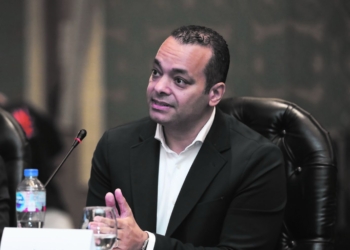Building on the intriguing insights from Can Mythical Gods Disguise Themselves Today? Insights from Gates of Olympus 1000, this article explores how ancient mythological disguise techniques continue to influence our understanding of identity today. From divine concealment to modern digital personas, the evolution of disguise reveals enduring themes of power, trust, and transformation.
Table of Contents
- The Evolution of Mythical Disguise Techniques and Their Cultural Significance
- Psychological Underpinnings of Disguise: From Myth to Modern Identity
- Technological Parallels: From Mythical Shapeshifters to Digital Identity
- Symbolism and Rituals: Disguise as a Tool for Transformation and Power
- Can Mythical Disguise Techniques Inform Modern Secrets of Identity?
- Case Studies: Mythical Disguise Techniques in Popular Culture and Personal Identity
- Returning to the Mythical: Bridging Ancient Techniques with Contemporary Questions
The Evolution of Mythical Disguise Techniques and Their Cultural Significance
a. Historical perspectives on disguise methods used by gods and supernatural beings
In ancient mythologies, gods and supernatural entities frequently employed disguise techniques to interact with humans or manipulate perceptions. For example, in Greek mythology, Zeus often transformed into animals or humans to conceal his divine identity, as seen in the myth of Zeus and Leda. Similarly, the Norse gods were believed to assume disguises to test mortals or avoid detection, emphasizing the importance of concealment in divine operations.
b. Transformation narratives across different civilizations and their symbolic meanings
Across civilizations, transformation stories—such as the Egyptian gods shifting shapes or the Hindu gods taking on different avatars—symbolized divine power, moral lessons, or the transition between worlds. These narratives underscored the idea that disguise was not merely concealment but also a form of communication, embodying divine authority, wisdom, or protection. The symbolic significance often hinged on the idea that true divine essence could be hidden beneath various forms, emphasizing transformation as a core theme.
c. The role of disguise in establishing divine authority and trust
Disguise was instrumental in establishing divine authority—gods would appear in human or animal forms to demonstrate their power or to teach moral lessons. For example, in Egyptian mythology, Osiris’s transformations reinforced his role as a judge of the dead. These disguises fostered trust among followers, as divine beings could interact with humans while maintaining their mystique and authority. This duality—concealment and revelation—was essential in legitimizing divine rule, a theme that persists even in modern perceptions of authority and leadership.
Psychological Underpinnings of Disguise: From Myth to Modern Identity
a. How mythological disguise techniques mirror human psychological defense mechanisms
Mythical disguise methods reflect innate human psychological strategies for coping with threats or uncertainties. For instance, the use of masks or personas in mythology parallels the human tendency to adopt different social roles to protect oneself or gain acceptance. Carl Jung’s concept of archetypes suggests that these masks serve as symbolic representations of our inner selves, allowing us to navigate complex social landscapes while maintaining psychological safety.
b. The concept of masks and personas in contemporary identity formation
Today, masks and personas are central to modern identity, especially in social media environments where individuals curate digital identities. The concept of “performing” different roles online echoes mythological disguise techniques, serving as a protective barrier or a means to explore facets of oneself. Psychologists note that this multiplicity of personas can foster creativity and self-awareness but also raise concerns about authenticity and psychological well-being.
c. Archetypes of disguise in storytelling and their influence on personal self-perception
Storytelling often features archetypes such as the trickster, the shapeshifter, or the hero in disguise, which influence how individuals perceive themselves and their potential. These narratives shape cultural expectations and personal identities, illustrating that disguise is not solely about concealment but also about transformation and empowerment. Recognizing these archetypes helps us understand how mythological strategies continue to inform our self-conception and social interactions.
Technological Parallels: From Mythical Shapeshifters to Digital Identity
a. Comparing mythological disguise methods to modern digital personas and avatars
Modern technology allows individuals to craft digital personas that function much like mythological shapeshifters. Avatars, online profiles, and virtual identities enable users to present curated versions of themselves, often emphasizing certain traits or hiding others. Platforms like Second Life or social media sites exemplify how digital disguises serve as a form of self-expression, protection, or experimentation—drawing clear parallels with mythic transformations.
b. The impact of technology on our ability to conceal or alter identity
Advances in digital editing, deepfake technology, and virtual reality have expanded our capacity to manipulate appearances and identities. This technological evolution raises questions about authenticity, trust, and security. For instance, deepfake videos can convincingly alter appearances or speech, echoing mythological disguises where divine beings altered their form to deceive or teach. These tools empower individuals but also pose ethical dilemmas regarding deception and consent.
c. Ethical considerations of identity manipulation in the digital age
As digital manipulation becomes more sophisticated, concerns about privacy, security, and authenticity intensify. The potential for identity theft or misinformation grows, prompting a need for ethical frameworks. Drawing from myth, where disguise served divine or moral purposes, contemporary society must balance innovation with responsibility—ensuring that identity manipulation is used ethically to empower rather than deceive.
Symbolism and Rituals: Disguise as a Tool for Transformation and Power
a. Ritualistic disguises in ancient mythologies and their purpose
Ancient rituals often involved disguises to invoke divine powers or facilitate spiritual journeys. For example, shamanic costumes in Siberian traditions or the masks used in Greek Dionysian festivals symbolized a temporary transition into another realm or identity. These rituals served to connect humans with divine forces, emphasizing disguise as a conduit for transformation and access to higher knowledge.
b. Modern practices of disguise in ceremonies, performance, and social roles
Today, disguises are prevalent in theatrical performances, ceremonies like masquerade balls, or social roles such as professionals adopting personas in customer service. These practices symbolize the fluidity of identity and the potential for growth through role-play. They also serve as mechanisms for social cohesion, allowing individuals to temporarily step outside their usual boundaries.
c. Disguise as a means of psychological and social transformation
Disguise enables profound psychological shifts, helping individuals confront fears or reinvent themselves. For example, adopting a new persona can foster confidence or aid in healing trauma. Socially, disguises can challenge stereotypes, promote empathy, or facilitate acceptance by allowing individuals to explore different facets of their identity in a safe space.
Can Mythical Disguise Techniques Inform Modern Secrets of Identity?
a. Lessons from myth: concealment as a form of empowerment or protection
Mythological stories reveal that disguise is often used as a tool for empowerment—gods hiding their true selves to test mortals or to protect their divine secrets. This suggests that concealment can be a strategic means of safeguarding one’s integrity or authority. Modern applications include privacy measures like encryption or pseudonymous online identities, echoing ancient strategies of safeguarding knowledge or power.
b. How ancient disguise strategies can inspire contemporary privacy and security measures
Techniques such as layered defenses, anonymization, and secure authentication mirror mythic concealment methods. For example, the use of cryptography parallels divine concealment of sacred knowledge, emphasizing the importance of safeguarding personal or sensitive information in a digital landscape.
c. The potential for myth-inspired techniques to influence future identity management
Future innovations may incorporate myth-inspired principles—such as adaptive disguises or dynamic identity shields—to enhance privacy and security. As technology evolves, understanding the symbolic and strategic depths of mythological disguise can guide the development of more sophisticated, ethically conscious identity management systems.
Case Studies: Mythical Disguise Techniques in Popular Culture and Personal Identity
a. Examples from literature, film, and media that draw on mythical disguise themes
- The Mask (1994 film): A literal mask transforming the wearer’s personality, echoing mythic shapeshifting
- Harry Potter’s Polyjuice Potion: Temporarily changing appearance to deceive or explore identities
- Superheroes like Batman and Spider-Man: Concealed identities that symbolize moral duality and protection
b. Personal stories of disguise and concealment in modern contexts
Individuals often adopt disguises for safety or privacy, such as whistleblowers hiding identities or online users employing pseudonyms. These acts reflect mythic strategies for navigating social environments where authenticity might be risky, highlighting the enduring relevance of disguise in personal security.
c. Analyzing the psychological and social effects of adopting disguises today
Adopting disguises can foster resilience, confidence, or catharsis. Conversely, excessive concealment may lead to disconnection or identity confusion. Recognizing these effects underscores the importance of balancing authenticity with strategic concealment, rooted in ancient mythic principles.
Returning to the Mythical: Bridging Ancient Techniques with Contemporary Questions
a. How insights from myth can deepen understanding of modern identity secrets
Mythology offers a rich framework for understanding the strategic nature of disguise—highlighting that concealment is often a form of empowerment and transformation. Recognizing these patterns helps us appreciate contemporary identity management as part of a long-standing human tradition rooted in mythic archetypes.
b. The ongoing relevance of disguise techniques in navigating social and personal challenges
In an increasingly interconnected and digital world, the ability to manage multiple identities—whether for privacy, safety, or self-exploration—remains vital. Ancient disguise methods provide timeless lessons on strategic concealment, encouraging us to adopt flexible, ethical approaches to identity.
c. Reflection on whether mythical gods’ concealment methods still hold secrets for today’s identity mysteries
While mythological disguises served divine and moral purposes, their underlying principles—such as strategic concealment, transformation, and trust-building—are highly applicable today. As technology advances and societal norms evolve, these ancient techniques can inspire innovative, ethical approaches to understanding and protecting personal identity in complex environments.
الرابط المختصر: https://propertypluseg.com/?p=152673























